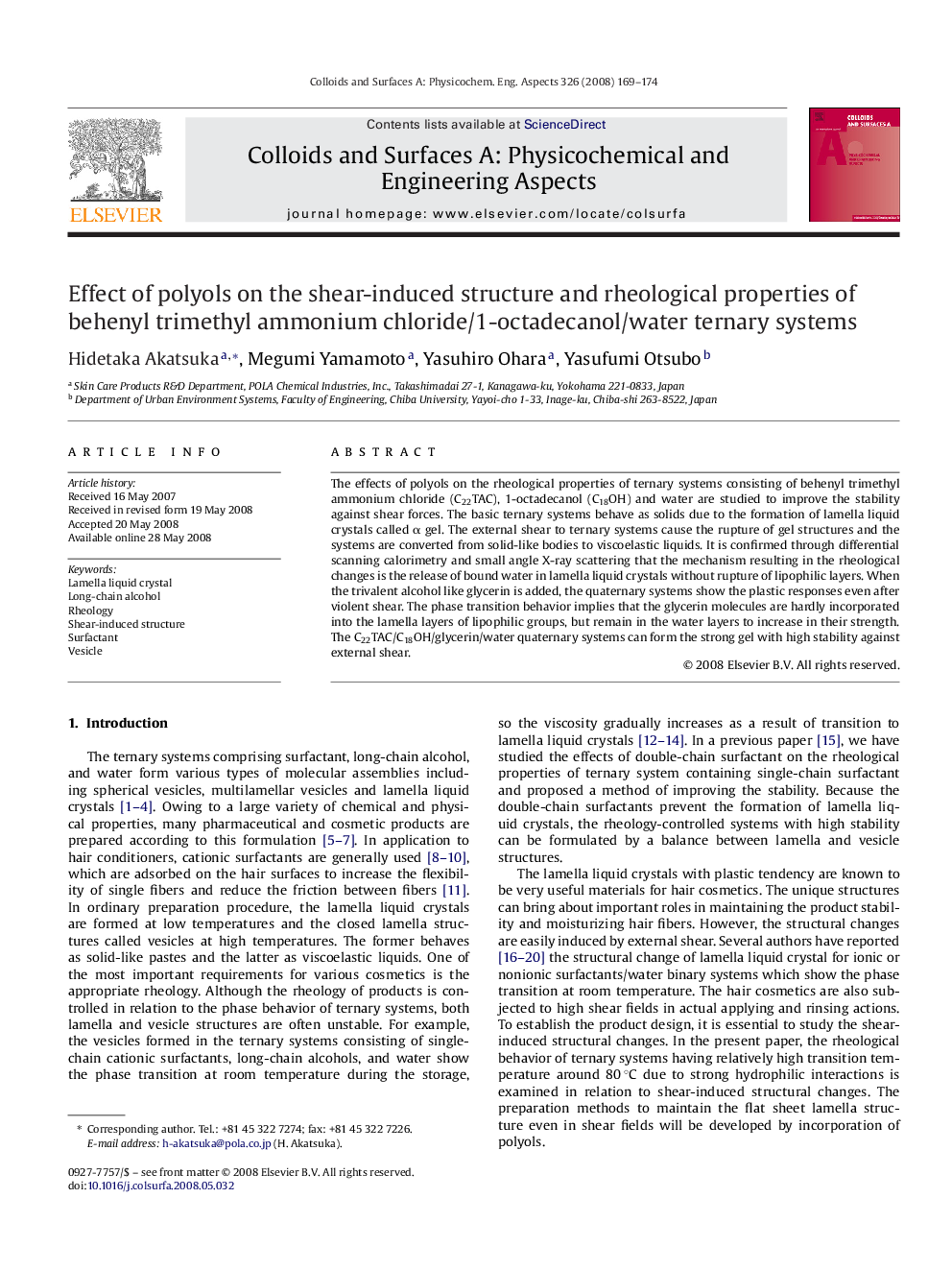| کد مقاله | کد نشریه | سال انتشار | مقاله انگلیسی | نسخه تمام متن |
|---|---|---|---|---|
| 596457 | 879520 | 2008 | 6 صفحه PDF | دانلود رایگان |

The effects of polyols on the rheological properties of ternary systems consisting of behenyl trimethyl ammonium chloride (C22TAC), 1-octadecanol (C18OH) and water are studied to improve the stability against shear forces. The basic ternary systems behave as solids due to the formation of lamella liquid crystals called α gel. The external shear to ternary systems cause the rupture of gel structures and the systems are converted from solid-like bodies to viscoelastic liquids. It is confirmed through differential scanning calorimetry and small angle X-ray scattering that the mechanism resulting in the rheological changes is the release of bound water in lamella liquid crystals without rupture of lipophilic layers. When the trivalent alcohol like glycerin is added, the quaternary systems show the plastic responses even after violent shear. The phase transition behavior implies that the glycerin molecules are hardly incorporated into the lamella layers of lipophilic groups, but remain in the water layers to increase in their strength. The C22TAC/C18OH/glycerin/water quaternary systems can form the strong gel with high stability against external shear.
Journal: Colloids and Surfaces A: Physicochemical and Engineering Aspects - Volume 326, Issue 3, 1 September 2008, Pages 169–174